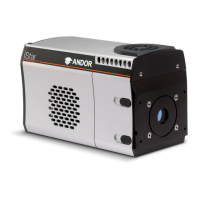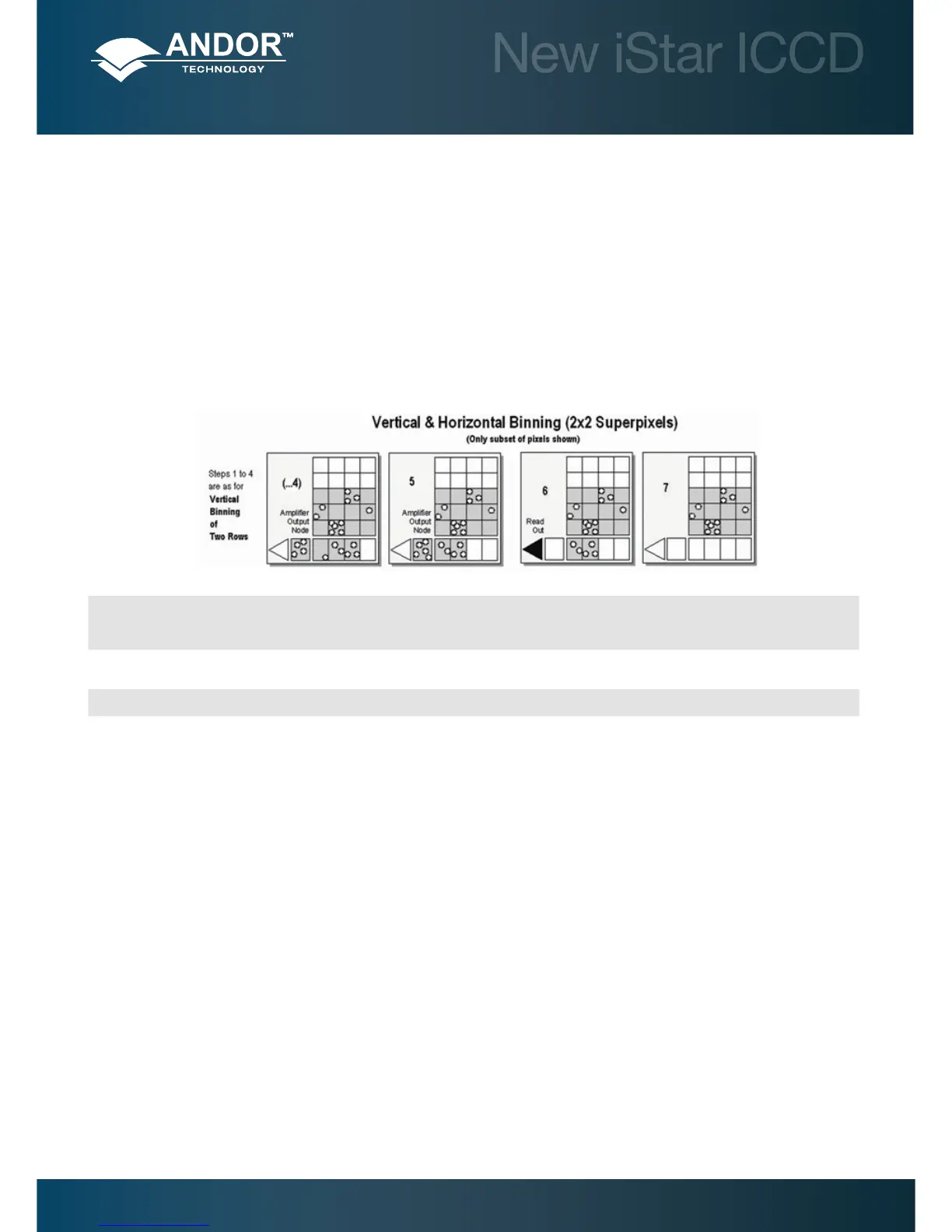Pre-Acquisition Setup - CCD
5.3.3.2 - Horizontal Binning
In this conguration, charges from two or more pixels in the serial register are transferred into the output amplier and
read out as one combined data value. Thus the charges from two or more of the horizontal elements are effectively
summed into the output amplier before being readout.
In the example below (where each superpixel is of dimensions 2 x 2 pixels) charges from two rows is rst binned vertically
into the shift register; then charges from two pixels of the shift register are binned horizontally into the output node of the
amplier. The effect of the combined binning processes is a summed charges equating to a 2 x 2 ‘superpixel’.
Since this example initially involves binning charge from two rows, the process begins in the same way as the previous
example (see Steps 1 - 4 of Vertical Binning section).
(...4)
Charges from two rows have already been vertically binned into the shift register. Charges in the shift register are now moved horizontally by one
pixel, so that charges on the endmost pixel of the shift register are moved into the output node of the amplier.
5
Charges in the shift register are again moved horizontally, so that the output node of the amplier now contains charges from two pixels of the
shift register - i.e. the charges have been horizontally binned.
6 The charges in the output node of the amplier are passed to the analog-to-digital converter to be read out.
7
Steps 4 to 6 are repeated until the shift register is empty. The process is repeated from Step 2 (in Vertical Binning section) until the whole frame
is read out.

